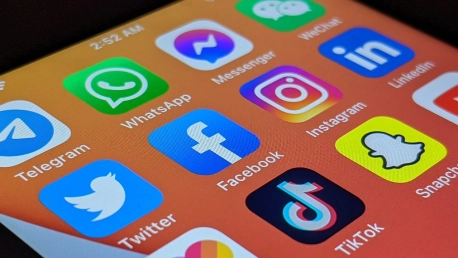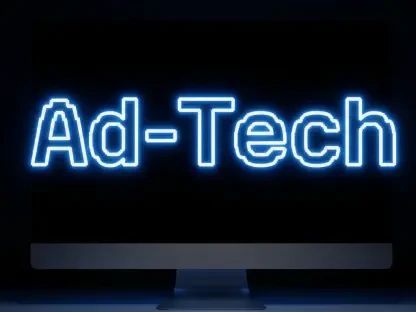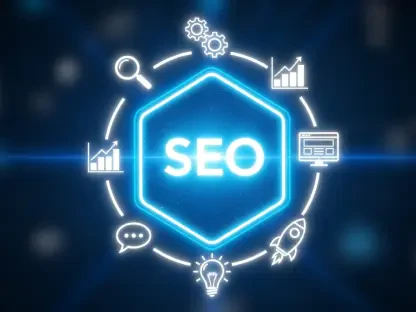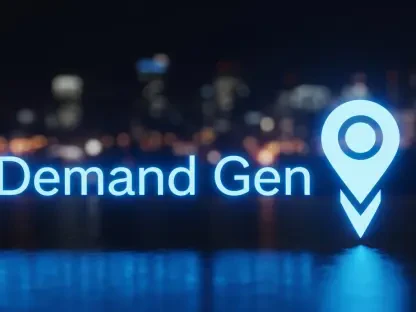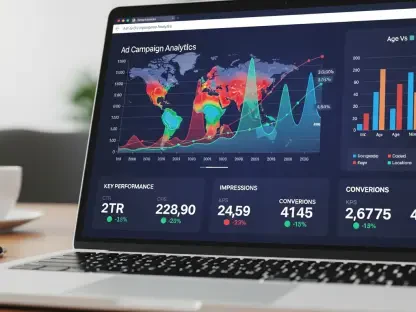Increasing engagement and turning your audience into paying customers doesn’t just happen overnight. You have to work for it by optimizing your social media pages to reach more people and increase brand awareness. With millions of brands competing for audience attention on various social media platforms, you can’t afford to stay passive and wait for them to come to you. Social media optimization is a powerful strategy to enhance your visibility and productivity, ensuring your business stands out in the crowded digital space. Below, we’ve rounded up 10 proven techniques to improve your reach, engagement, and conversion rates.
1. Determine Your Social Media Objectives
The first step in effective social media optimization is to clearly define your main goals for building and refining your social media profiles. Understanding what you want to achieve will guide your strategic decisions and ensure your efforts are focused and effective. Whether your goal is to boost sales, increase brand awareness, or generate leads, having a clear objective allows you to map out the specific actions needed to get there. This involves setting precise, quantifiable targets to measure your progress and stay on track. For instance, if your main goal is to increase sales through social media, you could set a specific target such as increasing online sales by 20% over the next six months. This measurable objective will guide your smaller milestones, such as improving audience reach, increasing engagement, and converting followers into paying customers. By breaking down your larger goal into smaller, actionable steps, you create a clear path to success that can be monitored and adjusted as needed. Specificity and numerical targets are crucial; they provide a benchmark against which you can measure your progress and make necessary adjustments.
2. Completely Fill Out Your Profiles
One of the essentials you should cover when optimizing your social media pages is ensuring that your main profile pages are thoroughly completed. A well-rounded and informative profile page is key to reaching your target audience. This starts with uploading a high-quality profile picture, preferably your company logo if you’re a business. A recognizable profile image boosts your brand’s visibility and professionalism. In addition to a strong visual representation, your profile needs to clearly describe your business’s offerings. Potential followers and customers should immediately understand what you do and how they can benefit from your products or services. Be sure to incorporate relevant keywords into your profile description, as this will enhance your searchability and visibility on the platform. Providing your business location is also vital, particularly for local searches, as it increases your chances of being found by nearby customers. Lastly, indicating your business hours helps manage your audience’s expectations and ensures they know when they can expect a response from you.
3. Utilize Hashtags
Hashtags are essentially the SEO of social media platforms like Twitter and Instagram, and they play a crucial role in boosting exposure. By adding hashtags to your captions, you increase the likelihood of your content getting discovered by a broader audience. However, it is important to optimize hashtags for the specific social media platform you’re using, as the effectiveness of hashtags can vary from one platform to another. For instance, hashtags are very effective on Twitter and Instagram but are not as useful on Facebook. On Twitter, hashtags are primarily used for searches. If you want to see specific tweets or conversations, you simply search for the hashtag in Twitter’s search bar. It is best practice to add one or two relevant hashtags per tweet. Studies have shown that tweets with only one hashtag tend to generate the most engagement. On Instagram, hashtags group posts under common themes, and the platform allows up to 30 hashtags per post. However, it is recommended to limit it to 11 relevant hashtags to maximize engagement. Knowing how to use hashtags effectively will significantly enhance your social media reach and engagement.
4. Produce Content That Addresses Followers’ Issues
Creating content that provides value and solves your followers’ problems is a cornerstone of successful social media marketing. Your content should not be limited to promotional materials but should also help your followers overcome obstacles they face. When your audience finds your content helpful and valuable, they are more likely to engage with it and share it, extending your reach even further. There are several types of content that can effectively address your followers’ issues. Infographics, for example, are informative, visually appealing, and highly shareable. They present information in a way that is easy to digest and understand. Emotional posts are another effective type of content. People are more likely to engage with content that stimulates their emotions, leading to more shares, comments, and likes. Additionally, sharing news updates keeps your audience informed about the latest happenings, which can also drive engagement. By consistently producing valuable content, you can build a loyal following that trusts your brand and is more likely to convert into paying customers.
5. Implement Images
The right images can capture attention and significantly increase engagement on social media. Given the enormous and growing amount of content that appears in users’ feeds, your images need to stand out. However, it’s important to note that each platform has different preferences when it comes to image content, so what works on Facebook may not necessarily work on Instagram or Twitter. Effective social media optimization involves tailoring your image content to the specific preferences of each platform. This may require experimenting with different image types, such as graphics, photos, and videos, to see what garners the most attention from your audience. Tools like eClincher can help you track the performance of your posts and determine which approaches are most effective. By regularly testing and adjusting your image strategies based on data, you can ensure your visual content consistently appeals to your audience and drives engagement.
6. Incorporate Calls-to-Action
Calls-to-action (CTAs) are crucial for encouraging your audience to interact with your content and take the desired actions, such as liking a post, signing up for a newsletter, or purchasing a product. Effective CTAs can boost engagement and help convert your audience into leads and customers. To get the most out of your CTAs, they need to be precise, straightforward, and concise. One effective strategy is to make offers that your audience finds desirable. For example, offering free eBooks or other resources in exchange for contact information can be an excellent way to convert leads. It’s important to be specific in your CTAs. Clearly tell your visitors what you want them to do, whether it’s following you on social media or participating in a contest. Additionally, simplicity is key; your CTAs should not require visitors to provide a ton of information or go through a lengthy process. Keeping them quick and straightforward increases the likelihood that your audience will follow through.
7. Craft Attention-Grabbing Titles
Headlines play a critical role in getting your followers to stop and take a second look at your posts. A compelling headline can make the difference between a post being scrolled past or engaged with. There are several strategies you can use to craft attention-grabbing titles that resonate with your audience. One effective method is to start with numbers. According to Moz, headlines that begin with numbers tend to resonate more with people. For example, the title of this article, “10 Ways to Optimize Social Media,” immediately gives readers a sense of what to expect and attracts their attention. Another strategy is to use negative wording when appropriate. Titles that include words like “worst” or “never” can sometimes produce better results compared to positive wording. For example, a title like “3 Things You Should Never Do on Social Media” may receive more engagement. By experimenting with these strategies, you can determine which types of headlines perform best for your audience.
8. Be Active on Beneficial Social Media Platforms
You don’t need to be present on every social media platform to increase awareness and promote your brand effectively. Instead, focus on the platforms that add the most value to your business and align with your goals and target audience. Choosing the right platforms allows you to concentrate your efforts and resources where they will have the most impact. For example, Facebook is a leading social media platform with over 2.27 billion monthly active users. Every business, regardless of industry, should have a Facebook account because search engines consider it a local SEO signal. This makes your business more “searchable” in local searches. Instagram, on the other hand, is ideal for businesses that rely on visuals, such as fashion, travel, and food industries. Twitter is perfect for sharing news and information and can also be used for customer support. Pinterest has high conversion rates and is ideal for businesses dealing with arts, crafts, and events. LinkedIn is the best platform for B2B transactions, making it essential for businesses targeting other businesses. Prioritizing platforms that align with your business needs ensures you can effectively promote your brand and engage your audience.
9. Optimize Your Posting Timing
Even if you’re posting high-quality content, you may not see the desired results if you’re not posting at the right times. Optimizing your posting schedule is key to ensuring your content reaches your audience when they are most active online. Posting during peak activity hours will maximize your content’s exposure and engagement. Determining the best times to post can vary depending on your specific audience and the platform you’re using. For instance, your audience may be more active on Facebook in the mornings but on Instagram in the evenings. The best approach is to test different times and measure the outcomes for each platform. Tools like eClincher can help you track the engagement of every post you share, allowing you to analyze the data and determine the optimal posting times for your brand. By continuously refining your posting schedule based on this data, you can ensure your content consistently reaches the largest possible audience.
10. Monitor Your Progress
Turning your audience into paying customers and boosting engagement won’t happen overnight. You need to put in the effort to optimize your social media pages, reach more individuals, and enhance brand awareness. In a landscape crowded with millions of brands vying for attention on various social media platforms, staying passive is not an option. You can’t just sit back and expect people to come to you. Social media optimization is a powerful tactic that can significantly enhance your visibility and productivity, making sure that your business stands out in the bustling digital marketplace. To assist you in this endeavor, we’ve compiled a list of 10 proven techniques to improve your reach, engagement, and conversion rates. These methods will provide you with actionable steps to enhance your social media presence. By employing these strategies, you’ll be better equipped to capture the attention of your target audience and turn that engagement into tangible business results. Whether you’re a small business or an established brand, these techniques can help you navigate the complexities of social media marketing and achieve your business goals more effectively.
